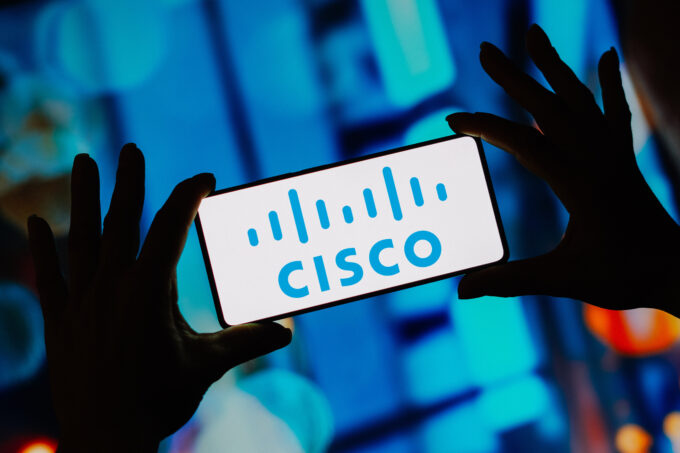
Busting the myths of M&A: 4 steps to success
Busting the myths of M&A: New research reveals why old merger strategies fail and how fresh thinking can lead to lasting value for both sides of the deal....

by Jim Pulcrano, Olivier Laplace Published December 4, 2023 in Finance • 10 min read
If Netscape hadn’t launched the user-friendly Mosaic browser in 1993, it might have been several years before the general public discovered the joys of the World Wide Web. Equally, if OpenAI hadn’t launched ChatGPT in November 2022, we might still be talking about the “forever AI winter.” Many of the tools and technologies that power our world today began in startups, and yet without outside capital, these products would never see the light of day.
The outside capital that is the lifeblood of these young firms typically comes from venture capital (VC), a high-risk, high-return, private-market asset class. VC funds provide financing and non-financial support to startups with little or no operating history and data but with significant potential for growth. In return, they get a stake in the company.
While VC investing is not new, it has arguably become a more interesting asset class for investors looking to secure outsized returns. Eight of the top 10 companies by market cap are tech companies, and seven of them were venture-backed (Apple, Microsoft, Nvidia, Tesla, Alphabet, Amazon, and Meta). Even in Europe, where the VC industry has long lagged that of the US, European VC outperformed all asset classes over the last decade with 23% net annual return (and over 31% for the five years previous to 2022) and is expected to perform strongly in coming years as the industry matures.
Yet many investors are put off by the high risk, perceived high fees, and lack of liquidity of VC. We know that nine out of 10 startups will either fail or not even return their invested capital. It’s therefore unsurprising then, that investors – especially those tasked with protecting the pensions of millions of ordinary workers – might shy away from this asset class. However, some are starting to take another look. A case in point is the California Public Employees’ Retirement System (CalPERS), the biggest US public pensions scheme, which plans a multibillion-dollar push into venture capital to make up for “a lost decade” of returns.
In this article, our goal is to simplify the complex world of venture capital for potential investors, who are also known as limited partners. We will outline both the advantages and risks associated with this type of investment and will provide guidance on the best ways to identify funds.
As Scott Cook, founder of American business software company Intuit, once said: “Success is a powerful thing. It tends to make companies stupid, and they become less and less innovative.” Once a large corporate has found a recipe for success, it often focuses on refining its strategies for efficiency and profitability. Consequently, the biggest firms turn to startups for fresh ideas and growth, often through acquisitions. A prime example is Cisco, which acquired 218 companies, many being startups, between 1993 to October 2021. Companies like Cisco recognize the need for outside-in innovation.

With the world facing systemic challenges like climate change and biodiversity loss, there is a growing need for innovation and new technologies. History has shown that many of these ideas originate in startups, which need funding to bring them to market.
Moreover, startups are often engines for employment growth. In 2022, 3.7m jobs were created in the United States by startups that were less than a year old. In Switzerland, roughly 400,000 people are employed by companies that are less than 10 years old.
Despite the benefits listed above, many investors are put off by the seemingly high fees and lack of liquidity in VC.
VC firms get their funds from limited partners (LPs) such as family offices, pension funds, funds of funds, university endowments, insurance companies, foundations, and high-net-worth individuals. Typically, a VC fund takes 2% of the fund’s invested capital as a management fee. If you have a $100m fund, this means that the fund managers have up to $2m to pay their salaries, rent, and expenses. Every year. In addition, if there is an exit, a so-called “liquidity event,” where they take 20% of the return after having paid out what the LPs invested. This is what is called “carry” or “carried interest,” a mechanism to align general partner (GP) and LP incentives. Let’s say that one of their portfolio companies, into which they had invested $10m, is acquired for $20m; the VCs get $2m (based on 20% carried interest) and the LPs get $18m, or 1.8X their money. In Europe, it works slightly differently where the “carry” is only computed when a fund is liquidated. Moreover, there is usually a hurdle rate of around 5% in most funds. This means that an internal rate of return (IRR) of around 5% is guaranteed for LPs before the GPs can pocket any carried interest.
Second, LPs need to brace for the long haul. VC funds typically have a life span of 10 years. During this time, LPs will only see returns if there is an exit of some sort with one of the portfolio companies. In effect, there is a risk that their entire investment is locked up for 10 years. In addition, if one of their companies goes public (an IPO), their equity may be locked up for 6-12 months, as they’ll be considered “insiders”. A counterargument to this lack of liquidity is that investors “stick to their guns” and avoid panic selling during a market downturn.
The opportunities to get your money out also depend on the market conditions. In the United States, there were 480 IPOs in 2020, 1,035 in 2021, 181 in 2022, and only 144 so far in 2023. In Switzerland, on the SIX Swiss Exchange, the respective numbers were 2, 5, 14, and 8 (of the 8 in 2023, only one was a Swiss company; the remainder were Chinese). IPOs are relatively rare events for startups, and most exits will be via a trade sale. If we take a hot area such as AI, worldwide in 2019 there were 242 acquisitions of AI startups, and 159 in 2020. Still a relatively small number of opportunities for VCs and their LPs to reap large rewards from their investments.
Investors also need to hold their stomachs for rollercoaster returns. Even the best-performing VC funds like Sequoia Capital, were down 30% in 2022. This brings us to our next point. If you are serious about investing in venture capital, it’s important to understand how to differentiate between the many VC funds out there.
“Happy families are all alike; every unhappy family is unhappy in its own way.” So goes the opening sentence of Leo Tolstoy’s novel Anna Karenina. One could apply this to the world of VC firms. Though all will cite their goal of double-digit returns, the truth is that only firms in the top quartile will achieve this. For example, Sequoia Capital, arguably one of the top VC firms in the world, had returns of 29%, 23% and 25% in 2019, 2020 and 2021 respectively. Its best year, 1976, showed a return of 72%, and YTD in November 2023 they are at 17.7%. Manager selection is therefore key.

“Never try to time the market. Great companies are created in all market cycles.”
While the decision of an individual, family office, or pension fund to invest in VC depends on the respective risk appetite and the required liquidity, here are some things to consider when evaluating funds:
There are many VC funds out there, so how do you pick the right one? As with any company, first look at the people managing the fund. A few questions to ask include: Are they aligned on why the firm was created? How do they make investment decisions? How many boards does each partner sit on? Do they have access to specialized knowledge to evaluate and support their portfolio companies? Is the team large enough to support the number of investments they are proposing? Has anyone left the firm? Is there a key partner who may be retiring soon, or before the fund closes? Try to avoid a one-person show.
As an experienced VC in China said to one of the authors recently, “You can’t really call yourself a VC until you’ve lost at least $15 million of your investors’ money and lived through one business cycle”.
Look at the last 10 exits (if they have them). Don’t accept that because the VC’s current fund is doing well, this is a predictor of the fund that you’re being asked to invest in. Do they have real M&A experience, such that they will get maximum value from the sale of a company? Even before that moment arrives, are they talking to their network, creating FOMO amongst potential acquirers, and nurturing them for the day when it is time to sell?
How does the GP put a current value on the fund? Is it the nominal value of their investments, or do they mark up their portfolio every time one of their companies has an up round? Are you comfortable with that paper value, or do you prefer to wait and see the value at distribution (shares or cash)?
How do they support the entrepreneurs that they invest in? Have they helped founders bring in key personnel or introduced them to potential customers? Talk with the CEOs of their current portfolio companies to find out how they operate.
Ask yourself: what is the fund’s valuation discipline? Which stage, geography, sector, vertical, and fund size do they invest in? Are you comfortable with this? Does their portfolio align with this, or does it seem opportunistic? If ESG is important to you, what do you see in their portfolio that would make you happy? If you’re focused on fields like biotech or semiconductors, is the fund large enough to invest in later rounds, especially in tough markets?

How much credibility do they have with other investors? Do they lead investment rounds, and easily get top-tier firms to invest with them? And the other way around, are top-quartile firms inviting them to co-invest?
How does the GP source investment opportunities? Do they have proprietary links to networks that others don’t? Like it or not, there is a virtuous circle of big-name firms (Andreesen Horovitz, Index, Sequoia, Benchmark, Bessemer, Accel, Kleiner Perkins, for example) attracting the hottest startups, and being able to get in the door of the corporations that will eventually acquire these ventures.
Diversify your investments by investing in different funds, each with different investing stages, vintage years, sectors, and geography. In addition, even if you invest in a single fund, research shows that you’re likely to get a higher IRR from funds that have geographic and industry diversification, i.e., that are not focused on a single region, technology, or product domain.
Never try to time the market. Great companies are created in all market cycles. Since 1980 at least one unicorn was created per year. Microsoft, Uber, Airbnb, MailChimp, and Instagram are just some of the companies that were founded during a recession. Have a long-term view and take a 10-year horizon.
As explained here be comfortable with the power law. Understand that a normal, Gaussian distribution is not how money is made in the high-risk world of venture capital.
The math seems to be against getting regular good returns and vetting fund managers seems hard. So, is it worth the hassle? Well, as Felda Hardymon, Partner Emeritus at Bessemer Venture Partners, says: “Your choices make no difference unless you have some spice in your assets that help you to outperform the next person.”
And then you hear stories like how German entrepreneur and investor Andy Bechtolsheim invested $100,000 in Google before it was even founded. Estimates of how much that 1% stake is worth vary, but it is usually over $1 billion.
If you aren’t interested in the potential profits, consider the value that VC investing brings to society and your pension. Without entrepreneurs, society stands still. Entrepreneurs help move society forward, but to do so, they need capital to start and grow their companies. The world, and your pension, need more founders, more successful VC funds, and, importantly, more investors.

Adjunct Professor of Entrepreneurship and Management
Jim Pulcrano is an IMD Adjunct Professor of Entrepreneurship and Management. His current projects include teaching in Lausanne, London and Silicon Valley, research on disruption, and various strategy, networking, customer-centricity, and innovation mandates with multinationals in Europe, Asia, and the US. At IMD, He is Director of the Venture Capital Asset Management (VCAM) program and teaches on the Executive MBA (EMBA), Orchestrating Winning Performance (OWP), and full-time MBA programs.

Tech Venture Capital at Vi Partners
Olivier Laplace is Managing Partner at VI Partners. With 18 years’ diverse experience as a tech entrepreneur, software developer, investment banker, and VC, Olivier led Swiss Post’s venture arm, Swiss Post Ventures, investing in 14 startups. An MBA holder, he initiated corporate VC, led M&A at Kudelski, and founded a mobile tech startup. Formerly in investment banking, Olivier started as a software developer.

July 7, 2025 • by Patrick Reinmoeller, Markus Nicolaus in Finance
Busting the myths of M&A: New research reveals why old merger strategies fail and how fresh thinking can lead to lasting value for both sides of the deal....

April 24, 2025 • by Jerry Davis in Finance
Many regional developers have tried and failed to emulate Silicon Valley’s VC-driven model for innovation. Detroit, the birthplace of Ford, is following an alternative route – with promising results....
 Audio available
Audio available
April 23, 2025 • by Karl Schmedders in Finance
CFOs must drive a financially disciplined way to manage environmental risks amid growing pushback against environmental sustainability efforts, explains IMD’s Karl Schmedders....

April 11, 2025 • by Jim Pulcrano in Finance
IMD's Jim Pulcrano interviews Ruchita Sinha, General Partner of venture capital firm AV8 Ventures, and explores her approach to early-stage investing....
Explore first person business intelligence from top minds curated for a global executive audience